|
Index...
|

 he Coventry Transport Museum has many vehicles, from the earliest cycles to the latest land speed record cars, and everything in between. The vehicles can range from the humble working-class mode of transport to very expensive luxury limousines. So how did the museum acquire them all?
he Coventry Transport Museum has many vehicles, from the earliest cycles to the latest land speed record cars, and everything in between. The vehicles can range from the humble working-class mode of transport to very expensive luxury limousines. So how did the museum acquire them all?
The collection started back in the 1936 when Horace Wilton (Sammy) Bartleet gave his collection of over forty historic cycles, books, photographs and archives to the city. (See Bartleet's Bicycle Book, The Story of Cycles & Cycling, first published in 1931/32 and reprinted many times. He even had his own museum in Little Park Street, Coventry.
This was just before the outbreak of the Second World war. Bartleet's gift was for them to be displayed in a free museum, so people could see the amazing part that Coventry has played in the invention and development of the cycle and the large industry which grew from it within the city. (Sadly, the Coventry Transport Museum no longer displays all of his historical cycles, and also charges a fee to visit, which goes against the original donation conditions.)
At that time the building of the new Herbert Museum and Art Gallery had begun in Earl Street - now the site of the Metropolis bar - but had to be stopped due to the war. After the war it was realised that the museum was not going to be big enough to fit the large collection of artwork and other items, so a new Herbert Art Gallery and Museum was built on the other side of Bayley Lane, on the corner of Earl Street.
The then Museum Curator, Cyril Scott, started collecting Coventry made things, like ribbon weaving and watch-making items, and sawing machines. He also added cars and motorcycles to the vehicle collection. This was when old cars were not very expensive, and many were also donated for free by Coventry Citizens. The collection soon grew and had to be stored in Much Park Street, looked after by Peter Mitchell and his team.
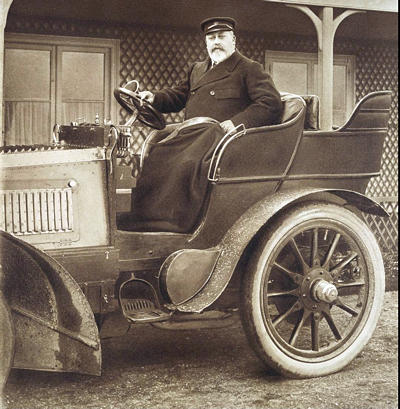
When the Transport Museum opened in 1980 it was still collecting vehicles as it had so many manufactures to collect, especially as Coventry has had over 140 different car manufacturers, over 60 motorcycle manufacturers and over 400 cycle manufactures during its long history, and to collect one of every model ever made would be a great task indeed.
The most important vehicles in the collection are those that were once owned by famous people. The Royal Family had been among the first in the country to start buying cars - the first being King Edward VII (left), who had a Coventry-made Daimler way back in 1901. He had ridden on a car at Lord Montagu's home in Beaulieu in 1898.
The Coventry Transport Museum found out about Queen Mary's 1935 Daimler State Limousine (below), which was originally acquired by the National Motor Museum at Beaulieu. It had been displayed on loan for a number of years and had been on the liner 'Queen Mary', which was moored permanently on the dockside at Long Beach, California, USA, for public enjoyment. After ten years sitting on deck in the hot Californian weather, the car's paintwork had faded badly and its leather upholstery had started to disintegrate due to the heat and sun. The car was returned to Beaulieu in a rather sorry state.
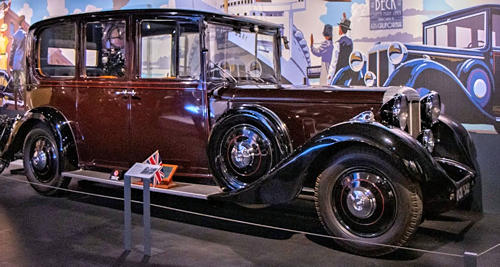
When the Museum's Chief Executive, Barry Littlewood, met his Beaulieu counterpart at an N.E.C. Motor Show, he was told what had happened to the vehicle and was asked if Coventry Museum would be interested in acquiring the car. A minimal purchase price was agreed and, very shortly after, Queen Mary's Daimler was welcomed back to the city of its manufacture to great acclaim by the then Lord Mayor.
Within a few days the museum's technicians had managed to fire up the quality Daimler engine, and a programme was set up to restore the damaged paintwork and upholstery. With the superb help of many local companies the car was completely re-upholstered in its original shade of blue leather, and the paintwork was completely renewed in official royal colours. To achieve this, the museum received permission from Buckingham Palace to paint the bodywork in royal vermillion, with black wings and a red coach stripe. The finished article was a great credit to all concerned, and the citizens of Coventry were delighted to see this fantastic vehicle both on the road and included in the new 'Royalty on the Road' exhibition at the museum, which also included many pictures of the Royal family in transport related photographs that the museum were allowed to select from the Windsor Castle Archives.
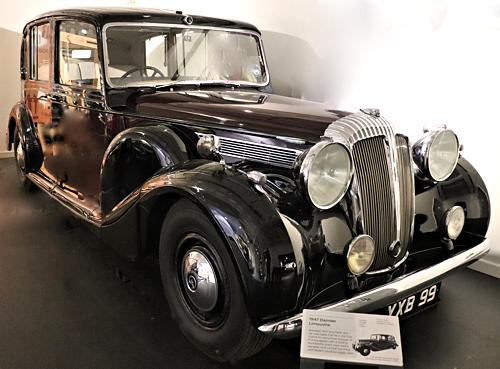
The news of the high quality restoration of the car spread rapidly throughout the motoring world and, soon after, the museum received a proposition from a Daimler enthusiast who ran a vehicle-hire business in Leicester. He was the proud owner of a 1947 Daimler which was King George VI's number one state car, and which was in superb running order. He advised the museum that he was so impressed with the restoration work that they had carried out on Queen Mary's car that he was going to leave his car to the Museum in his will as an outright donation. True to his word, when he passed away (which, sadly, was only a few months after changing his will), the trustees of his estate arranged for the vehicle to be donated to the museum.
Thus, the museum now had two fine Royal Cars, both in full working order and, when not on display, would take part in many local events and rallies. The museum's reputation for caring so well for royal cars was cemented, and some time later it was offered the chance to purchase the Mini Metro that Lady Diana Spencer, later to become Princess Diana, used as her personal transport while she was courting Prince Charles (now King Charles III). The Prince had bought it for her after visiting the Austin factory's new Metro production line in 1980. With the help of a Science Museum, London, grant, the car was purchased for a very nominal sum and joined the museum's stable of Royal Cars. Very sad subsequent events proved the huge popularity of Lady Diana, and the car is now a very special exhibit in the museum because of the public's massive affection for the late Princess.
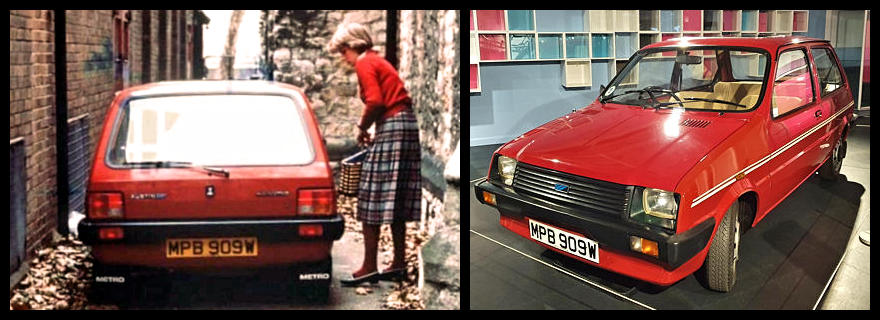
Today, all of the cars are highly important and popular features of the museum's Collection.
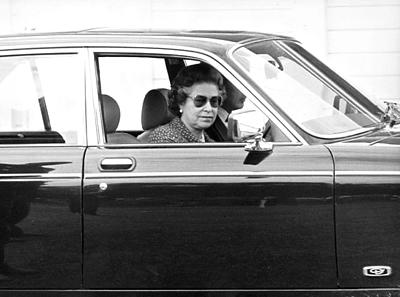
A strange note:
When Barry Littlewood, the museum's Chief Executive, retired, on his last day he presented to the museum a lovely dark green Daimler Double-Six car, which had belonged to Queen Elizabeth II. He had secretly negotiated this free gift to the museum with the donors as a surprise for the museum staff and as a farewell gesture (please see attached photograph). However, for some reason the new management and the curator of the transport museum later gave the car back to the donors, and it is now understood to be somewhere in America.
Paul Maddocks, 2022
Website by Rob Orland © 2002 to 2025